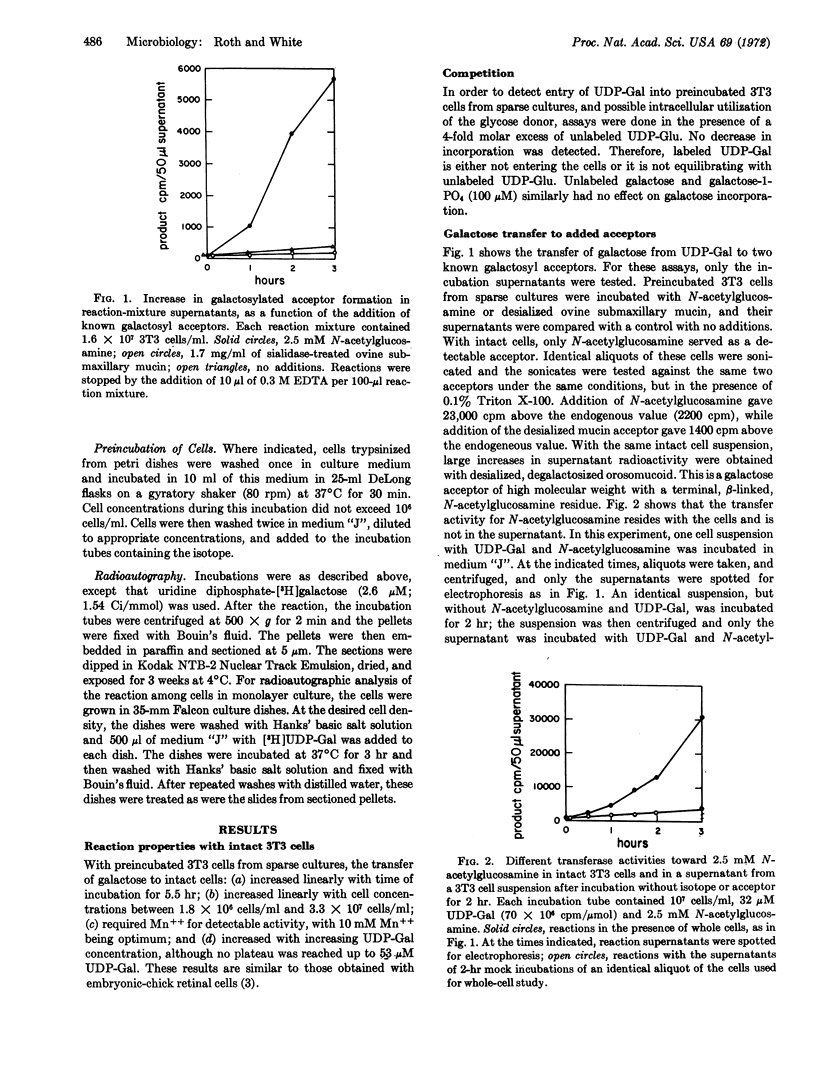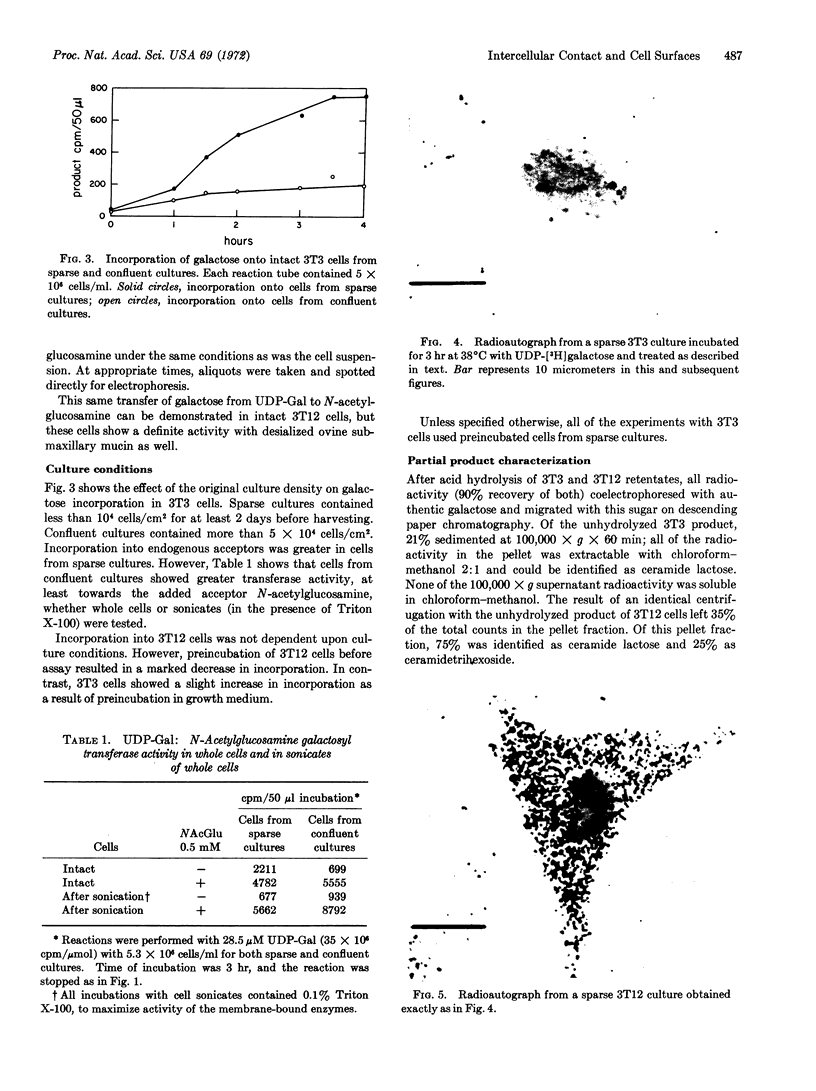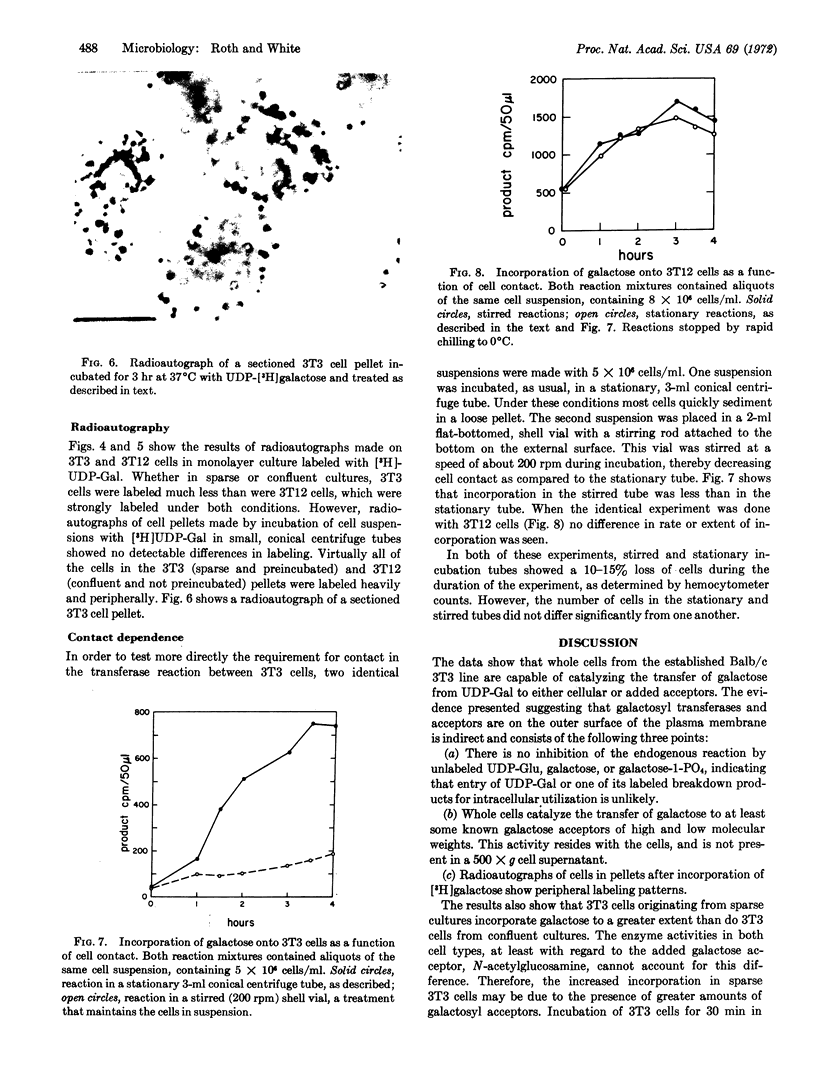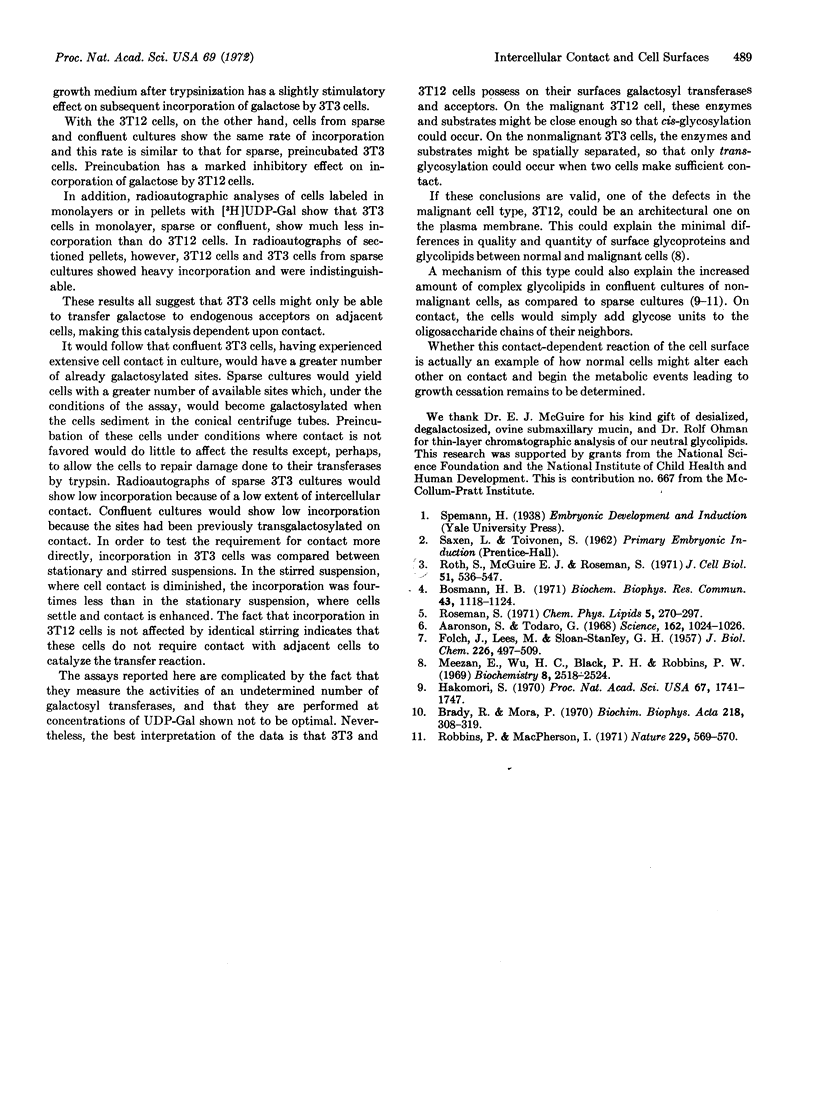Abstract
Evidence is presented suggesting the presence of galactosyl transferases and galactosyl acceptors on the outer surfaces of intact Balb/c 3T3 cells. In addition, the data indicate that these transferases may only be capable of transferring galactose from uridine diphosphate galactose to galactosyl acceptors on adjacent cells after intercellular contact is made (trans-glycosylation). Intact Balb/c 3T12 cells, by contrast, show no requirement for intercellular contact in order to carry out this reaction suggesting that these cells, which do not exhibit contact inhibition of growth, may be able to transfer galactose to acceptors situated on the same cell as the enzyme (cis-glycosylation).
Electrophoretic and radioautographic assays were used to detect surface transferase activities in these two cell lines. Results of experiments on cells from sparse and dense cultures, and under conditions where intercellular contact was regulated, are consistent with the above hypothesis.
Keywords: cell culture, mouse, radioautography, contact inhibition, cis-and trans-galactosylation
Full text
PDF




Images in this article
Selected References
These references are in PubMed. This may not be the complete list of references from this article.
- Aaronson S. A., Todaro G. J. Basis for the acquisition of malignant potential by mouse cells cultivated in vitro. Science. 1968 Nov 29;162(3857):1024–1026. doi: 10.1126/science.162.3857.1024. [DOI] [PubMed] [Google Scholar]
- Bosmann H. B. Platelet adhesiveness and aggregation: the collagen:glycosyl, polypeptide:N-acetylgalactosaminyl and glycoprotein:galactosyl transferases of human platelets. Biochem Biophys Res Commun. 1971 Jun 4;43(5):1118–1124. doi: 10.1016/0006-291x(71)90578-x. [DOI] [PubMed] [Google Scholar]
- FOLCH J., LEES M., SLOANE STANLEY G. H. A simple method for the isolation and purification of total lipides from animal tissues. J Biol Chem. 1957 May;226(1):497–509. [PubMed] [Google Scholar]
- Hakomori S. Cell density-dependent changes of glycolipid concentrations in fibroblasts, and loss of this response in virus-transformed cells. Proc Natl Acad Sci U S A. 1970 Dec;67(4):1741–1747. doi: 10.1073/pnas.67.4.1741. [DOI] [PMC free article] [PubMed] [Google Scholar]
- Meezan E., Wu H. C., Black P. H., Robbins P. W. Comparative studies on the carbohydrate-containing membrane components of normal and virus-transformed mouse fibroblasts. II. Separation of glycoproteins and glycopeptides by sephadex chromatography. Biochemistry. 1969 Jun;8(6):2518–2524. doi: 10.1021/bi00834a039. [DOI] [PubMed] [Google Scholar]
- Robbins P. W., Macpherson I. Control of glycolipid synthesis in a cultured hamster cell line. Nature. 1971 Feb 19;229(5286):569–570. doi: 10.1038/229569a0. [DOI] [PubMed] [Google Scholar]
- Roseman S. The synthesis of complex carbohydrates by multiglycosyltransferase systems and their potential function in intercellular adhesion. Chem Phys Lipids. 1970 Oct;5(1):270–297. doi: 10.1016/0009-3084(70)90024-1. [DOI] [PubMed] [Google Scholar]
- Roth S., McGuire E. J., Roseman S. Evidence for cell-surface glycosyltransferases. Their potential role in cellular recognition. J Cell Biol. 1971 Nov;51(21):536–547. doi: 10.1083/jcb.51.2.536. [DOI] [PMC free article] [PubMed] [Google Scholar]





